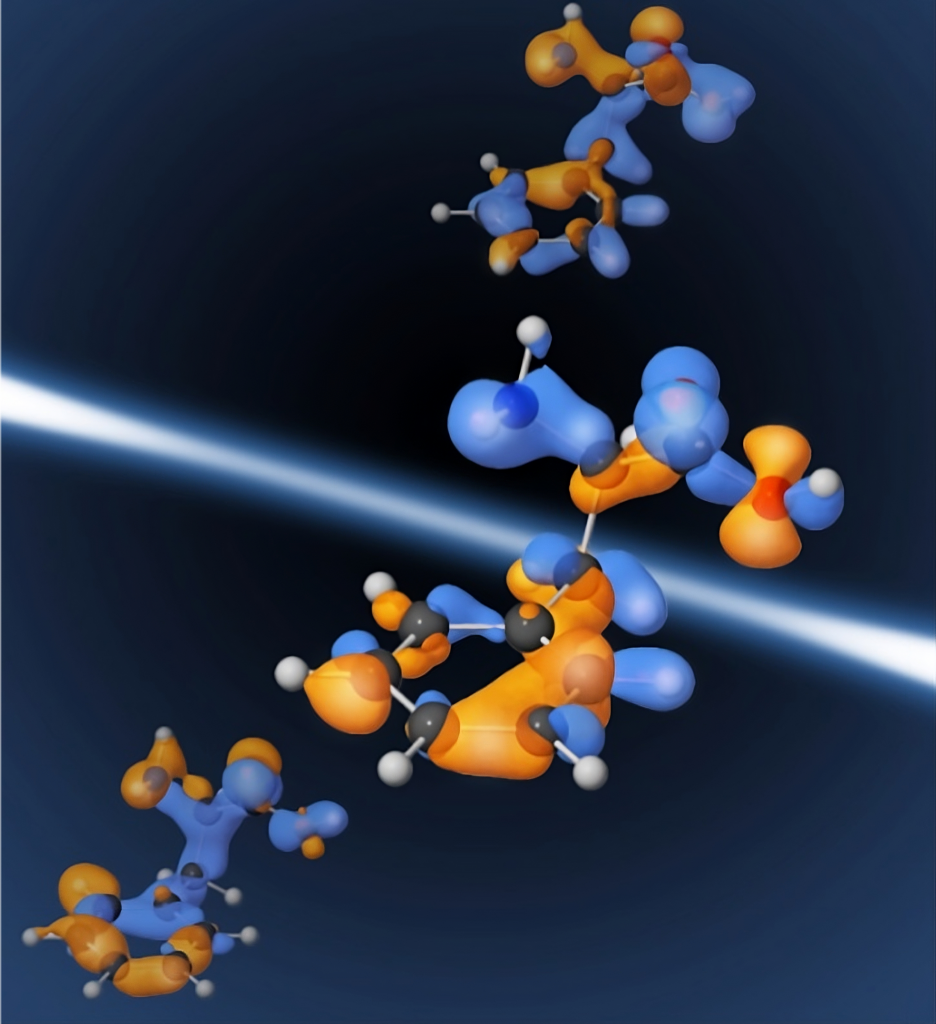XChem package compiles a set of computational tools able to provide a full quantum mechanical description of molecular ionization in the time domain by including both electronic and nuclear degrees of freedom. The used approach has provided reliable predictions and has opened the way to new applications in emerging scientific disciplines, as attochemistry, single molecule imaging, coherent attosecond control of chemical reactions, etc.
Xchem can compute
- The Close Coupling Matrix (CCM) for a user-defined set of ionization channels (each defined as an ionized molecular state coupled to electrons of given angular momenta) and including short range states relevant to the problem at hand.
- Scattering states and scattering phases by asymptotic fitting to the analytical solution.
- (Partial) photoionization cross sections within perturbation theory.
- Lifetime and character of resonances embedded in the molecular continuum, either via analysis of the cross section or via inclusion of a complex absorbing potential in the CCM yielding complex eigen-energies.
- The electron dynamics during and after ionization, caused by and probed with ultrashort laser pulses, by solving the time dependent Schrödinger Equation using the CCM.
- The electron dynamics during and after ionization, caused by and probed with ultrashort laser pulses, by solving the time dependent Schrödinger Equation using the CCM.
Xchem can be used for
- The theoretical study of ultrafast processes in pump-probe experimental method, such as Attosecond Transient Absorption Spectroscopy (ATAS) and Reconstruction of Attosecond Beatings by Interference of Two-Photon Transitions (RABBITT).
- The investigation of photoionization of complex molecules close to threshold, where electron correlation effects may dramatically affect the (partial) photoionization cross section.
- The study of ionization processes intrinsically dependent on electron correlation, like Autoionization and Auger Decay.
- The computation of potential energy surfaces for the investigation of molecular dynamics during and after fast photoionization events.

